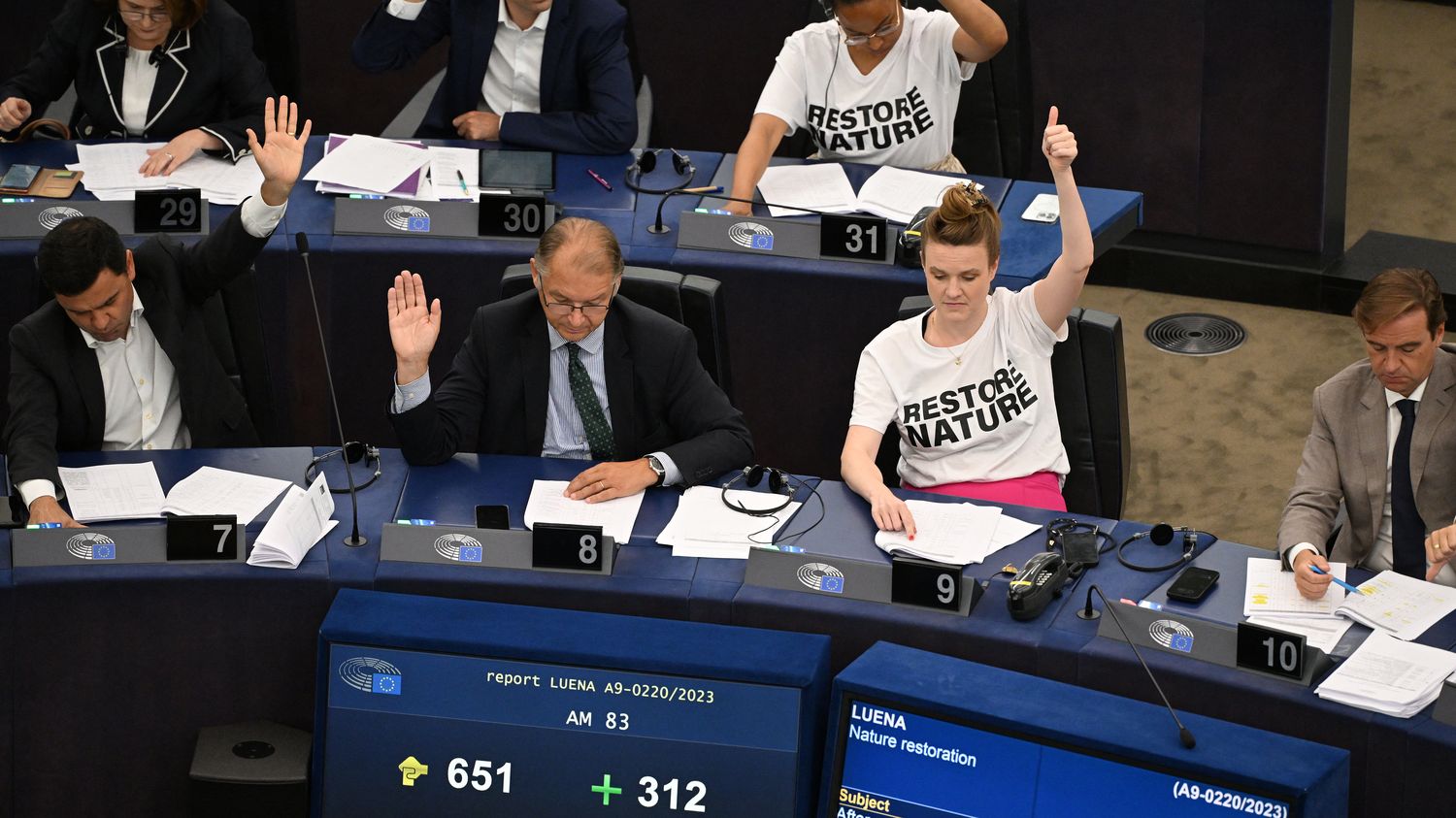The agreement requires the Twenty-Seven to restore damaged ecosystems in the coming years. But this compromise was watered down during its review.
After long hours of negotiations, the member countries of the European Union (EU) and the European Parliament reached, Thursday, November 9, shortly before midnight, a provisional agreement on the legislative regulation relating to the restoration and preservation of the biodiversity of ecosystems in Europe. This announcement puts an end to a long political series that began at the end of June.
The Spanish Minister for Ecological Transition, Teresa Ribera Rodriguez, whose country holds the presidency of the Council of the EU until December 31, welcomed this compromise in a press release. According to her, the agreement will allow “rebuild healthy ecosystems [et] preserving nature for future generations, while fighting climate change”.
Defined as one of the pillars of the EU Green Deal, this proposed European regulation is presented as a key text for the restoration of wetlands, forests, rivers or maritime areas in Europe, even if several initial measures were rejected in the European Parliament.
Defined as one of the pillars of the European Green Deal, this proposal is presented as a key text for the restoration of wetlands, forests, rivers or maritime areas in Europe, even if several initial measures were rejected in Parliament European.
1 What is the objective of this text?
Proposed in mid-2022 by the European Commission, this project aims to impose objectives on Member States “legally binding” restoration of nature and biodiversity. This bill is in line with the biodiversity conference agreement, which aims to protect 30% of land and seas.
And there is urgency in Europe. Pollution, urbanization, intensive exploitation… According to a report from the European Environment Agency published in August 2020, more than 80% of natural habitats in the European Union are in a state of conservation “bad or mediocre”. The study is particularly concerned about the state of peatlands, dunes and meadows and estimates that 70% of European soils are in poor health.
2 Why was its adoption so complicated?
The text was at the heart of a long European political battle and the legislative project was opposed by right-wing and far-right European elected officials. The European People’s Party (EPP), the leading political force in Parliament, has long called for its rejection. Conservatives feared that this new legislation aimed at restoring ecosystems would come at the expense of the agricultural sector, fishing or the forestry industry.
As a result, the bill was largely amended, recalls The world. The Society for Ecological Restoration, in a report released October 23 (PDF)considers that these modifications reduce “ambition” of text, reverse “order of priorities” and slow down the pace “of a necessary transition towards a sustainable society”.
3 What does the adopted compromise contain?
In a press release, the European Council detailed the main measures provided for by the agreement. The new legislation thus requires Member States to restore, by the end of the decade, at least 30% of degraded ecosystems, then 60% by 2040 and 90% by 2050. The text has for ambition that “20% of the entire European territory” land and sea, make “the subject of a nature restoration measure in 2030”.
However, Pascal Canfin, president of the environment committee in the European Parliament, specifies on the social network Linkedin that these objectives could be “adapted to take into account certain national specificities so as to make them relevant to the local context”.
These new rules require each country to submit a national nature restoration plan to the European Commission, which must present objectives “quantitative” And “qualitative”. The text also provides for “specific requirements” depending on the different types of ecosystems. A provision was also added, asking Member States “the planting of three billion additional trees by 2030” within the EU. Demanded by the EPP, an emergency brake “controlled by the Commission” may interrupt the regulation for agricultural ecosystems, “if a force majeure event poses a risk” food security on the continent.
4 What are the reactions?
Opposed to the version of the text adopted in the European Parliament in July 2023, Anne Sander, EPP MEP and rapporteur of the text in the Agriculture Committee, highlighted the notable progress. “The proposal was completely out of place. The agreement reached puts food security at the center of our priorities,” she says. However, “points of vigilance” persist according to the European elected official. They must be “analyzed and discussed over the coming days”, specifies Anne Sander. The latter promises to ensure the proper application of the text so that restoration plans do not impact farmers or foresters.
MEP Pascal Canfin, head of the environment committee in Parliament, welcomed this compromise found late in the evening. “We can be proud of this historic result which defines ambitious rules that are practicable by all“, he emphasized on the social network “Until now, we had rules to protect the most remarkable natural spaces, but we did not have any to restore nature where it is already degraded”he continued on Linkedin.
For their part, NGOs are divided on the effectiveness of this legislative project. “Even though we are happy to see that all the ecosystems initially included by the regulation are still in the agreement reached, articles have been watered down compared to the proposal initial”, regrets WWF. The World Wide Fund for Nature regrets the “included exemptions and excessive flexibility regarding the obligations of Member States”.
